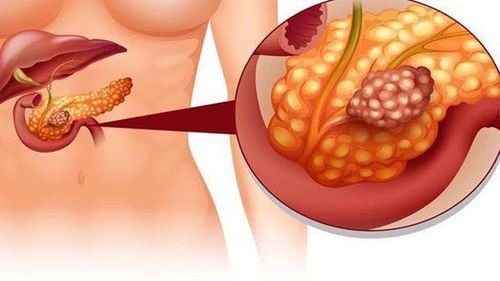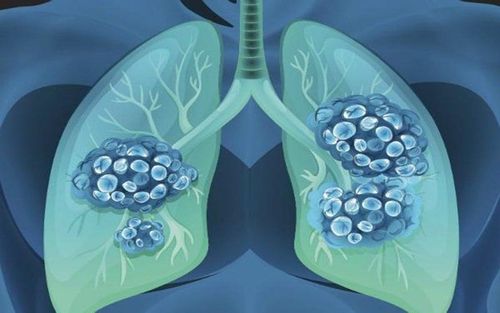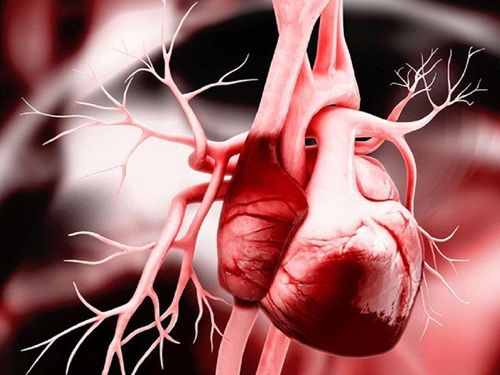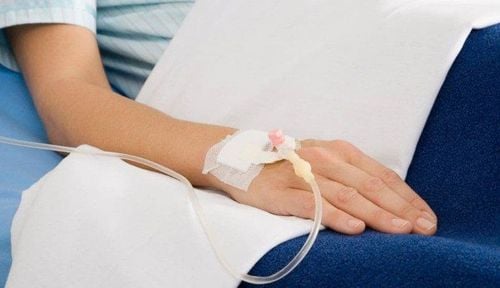This is an automatically translated article.
The article was written by Dr. Mai Xuan Thien - Emergency Department, Vinmec Times City International HospitalColchicine poisoning is uncommon but very severe and has a high mortality rate. The disease can be easily missed because the gastrointestinal manifestations can resemble other systemic diseases.
1. What is Colchicine?
Colchicine is a neutral oil-soluble alkaloid with weak anti-inflammatory properties. It is extracted from two plants: Colchicum autumnale (autumn crocus, meadow saffron) and Gloriosa supeerba (glory lily). Colchicine has been used for centuries to treat acute gout and is approved by the FDA for the prevention of acute gout attacks as well as for the treatment of Mediterranean fever (FHF) to reduce the incidence of complications. Colchicine also plays an important role in the treatment of other conditions such as recurrent pericarditis, scleroderma, Behcet's syndrome, and Sweet's syndrome.
The use of colchicine is limited due to its toxicity. The drug is safe when used in therapeutic doses as directed. However, side effects on the digestive system can occur before symptoms improve, even when taken at the recommended dose. When overdosed, colchicine can cause dangerous systemic toxicity. Acute colchicine poisoning is uncommon, but has a high mortality rate. Therefore, it is very important to recognize early signs of Colchicine poisoning.
2. Pharmacokinetics
Colchicine is rapidly absorbed from the gastrointestinal tract, peak plasma concentrations are reached 0.5-3 hours after oral administration. In overdose, the absorption of the drug is not delayed. The drug is actively metabolised in the liver, with a systemic bioavailability of 25-50%. After absorption, colchicine is rapidly distributed into all tissues, where it is bound to intracellular factors. At therapeutic doses, about 10-15% are protein bound and the volume of distribution is 2-12 L/kh. But can reach 21 L/kg in overdose. Colchicine is eliminated primarily by hepatic metabolism by the cytochrome P450 CYP 3A4 homologue, which is involved in deacetylation and methylation, and is subsequently excreted in the bile. Colchicine and its metabolites undergo enterohepatic circulation to return to the systemic circulation. The kidneys have an important role in the clearance of colchicine, and clearance is markedly reduced in patients with hepatic or renal impairment.Patients with impaired liver and kidney function are often at high risk of colchicine toxicity and need to be closely monitored even when receiving usual therapeutic doses. In addition, drugs such as clarithromycin and ciclosporin, which are inhibitors of P-glycoprotein (P-gp), an ATPase booster that is integrated in the cell membrane and encoded by the MDR1 (ABCB1) gene, may increase the risk of cause of colchicine toxicity. Inhibition of P-gp increases gastrointestinal absorption and decreases elimination (eg from hepatocytes) leading to increased plasma and intracellular concentrations. Increased intracellular concentrations lead to tubulin inhibition and increased toxicity.
The mean half-life with oral colchicine is 4.4-16 hours at therapeutic doses and can be up to 11-32 hours in toxic patients. Colchicine can be detected in white blood cells and urine for at least 9 days with a single intravenous dose. The stated half-life in white blood cells is 60 hours. According to post-mortem tissue analysis, colchicine accumulates in high concentrations in the bone marrow, testes, spleen, kidneys, heart, liver, gastrointestinal tract, lungs, and brain.
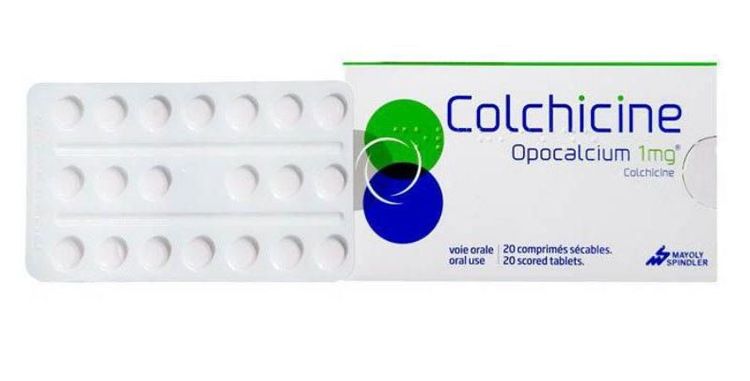
3. Therapeutic dose and poisoning
Several therapeutic doses for FMF (Mediterranean Fever), Gout and prophylaxis. Typical oral colchicine doses for FMF are between 1.2 and 2.4 mg/day, while the recommended dose for gout is 1.2 mg followed by a single 0.6 mg dose in acute gout, and 0.5-0.6 mg/day for gout prophylactic dose 3-4 times a week. In young children with FMF the dose should be adjusted for weight, and range from 0.3-1.8 mg/day in children 4-6 years, and 0.9-1.8 mg/day in children 6-12 years (Older children) should be administered at the same dose as adults) and may be increased to 2 mg/day if exacerbations are not controlled. The tablet is available in strengths of 0.6-1 mg, and an injection dose of 0.5 mg/mL is available in some countries.
Using intravenous Colchicine with the expectation of having a faster effect than oral, however, according to FDA, intravenous Colchicine has been withdrawn from the drug market. The risk and toxicity of intravenous drugs is significantly increased, in part due to the lack of early gastrointestinal symptoms. If intravenous colchicine is used as an alternative to oral administration, no more than 50% of the oral dose should be used due to lack of first-pass hepatic metabolism. Poisoning in these cases is dose dependent and cumulative throughout the course of treatment, should not exceed 2-4 mg in adults, and colchicine (all forms) should not be used for 7 days thereafter. Use should be avoided or the dose significantly reduced in patients with impaired renal function.
In general, the risk of colchicine toxicity is dose dependent. However, the therapeutic dose of the drug is low, and the gap between the therapeutic dose and the toxic dose is not high, and the mortality rate is high when taking more than 0.5 mg/kg in cases of acute poisoning.
Gastrointestinal and coagulopathy reported at doses lower than 0.5 mg/kg, bone marrow hypoplasia, and 10% mortality observed in 0.5–0.8 mg/kg oral administration, and 100% mortality in doses above 0.8 mg/kg. The dose range for severe sequelae and death is wide, and there is no clear cutoff between nontoxic, toxic and fatal doses in both adults and children.
4. Drug interactions
Interactions between colchicine and drugs or compounds that inhibit CYP3A4 may lead to increased plasma and tissue concentrations leading to a risk of toxicity. Drugs and known inhibitors of CYP3A4 such as clarithromycin, erythromycin, ketoconazole, and grape juice, and many other inhibitors can interact with the drug. P-gp inhibitors that interact with colchicine have been reported to include clarithromycin and ciclosporin.
Currently all inhibitors of CYP3A4 and P-gp are contraindicated for use with colchicine in patients with impaired liver and kidney function, and colchicine dose reduction when used in patients with normal renal function . The use of colchicine in combination with statins (such as fluvastatin, lovastatin and pravastatin) can cause myopathy. The mechanism of this interaction is not fully elucidated but may be related to cytoskeleton relaxation by both statins and colchicine.
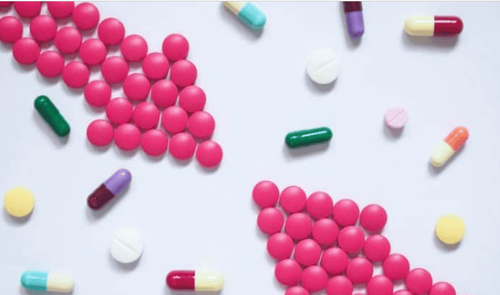
5. Mechanism of poisoning
Colchicine binds to tubulin proteins in the cell, preventing the polymerization of alpha and beta forms to form microtubules. This process disrupts microtubule formation resulting in damage to Golgi apparatus binding proteins, decreased endocytosis and exocytosis, altered cell shape, and decreased motility cells and stop cell division.
At toxic doses, Colchicine halts metaphase cell division because chromosome division is dependent on microtubule function, thereby inhibiting cell division. This effect in all cell types was seen in both therapeutic dose and systemic toxicity with multiple organ failure. Systems where cells have a high rate of regeneration such as bone marrow, digestive tract, hair follicles are the most sensitive and vulnerable.
Disruption of the microtubule network can also lead to decreased expression of adhesion molecules on the surface of neutrophils and modulation of signaling for cytokine production. Colchicine may have a direct toxic effect on cardiomyocytes. This effect may be due to the ability of the drug to directly bind to the microtubules of muscle cells, affecting the conduction and contractility of the myocardium. Inhibition of microtubule function in other cell types, such as cytoplasmic motility and exocrine hormone secretion, and possibly related neurotransmission and neurotransmission, results in multiple failure. organs in patients with acute poisoning. Colchicine also inhibits the release of histamine from mast cells, inhibits insulin secretion in the beta islets of the pancreas, inhibits the central respiratory center, induces hypotension by stimulating the central vasomotor system, and elevates patient response to sympathetic nervous system stimulants.
Current studies are focused on the effect on P-gp in colchicine toxicity because the carrier is an exocytosis protein. Stopping the expression of P-gp in leukocytes resulted in a threefold increase in colchicine concentrations in neutrophils compared with lymphocytes, possibly explaining the mechanism of action of colchicine. This further suggests that P-gp is an important factor in colchicine toxicity which may partly explain the mechanism of leukopenia and bone marrow suppression.
6. Poisoning of reproductive organs and excretion in breast milk
Sperm motility dependent and microtubule function may be hypothesized by colchicine. However, in experimental studies it has been shown that the plasma concentrations required to induce spermatogenesis are 3000 times greater than those obtained at therapeutic doses. Recent data show that at therapeutic doses there is little effect on sperm activity. There is no convincing evidence that colchicine can affect a woman's reproductive organs. In fact, controlling the attack phase of FMF in pregnant women can reduce peritoneal adhesions and mechanical infertility.
Small amounts of colchicine were found in umbilical cord samples, suggesting that it may cross the placental barrier. Some clinical cases show no effect on fetal weight during pregnancy, miscarriage rate or congenital malformations. Furthermore, in pregnant women treated with colchicine for FMF, rates of congenital malformations and chromosomal abnormalities were similar to rates in the general population. Large studies suggest that only a small number of published cases of colchicine have been associated with Down syndrome. Most current recommendations continue to use colchicine in pregnant women with amniocentesis performed in the third and fourth months of pregnancy.
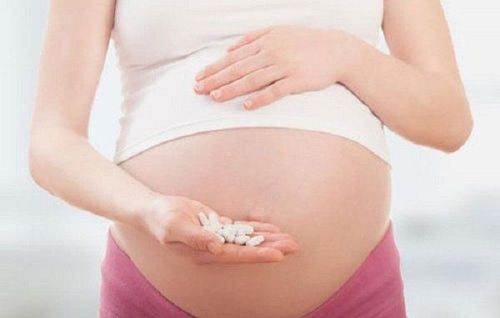
Colchicine is present in breast milk and can combine with fatty acids and proteins. Concentrations in breast milk are parallel to the plasma concentration-time curve. Assessment of daily intake by neonates is less than 1/10 of the therapeutic dose (per Kg). This has led to the recommendation to remain on colchicine during lactation. The American Academy of Pediatrics classifies colchicine as safe for use during lactation.
The potential risks of colchicine on infant growth should be considered when growth requires cell division. However, one study found that growth in children was within the normal range of children who received long-term colchicine (0.5 to 1 mg/day) treatment. Long-term evaluation of this group showed that their development and reproductive organs were normal.
Please dial HOTLINE for more information or register for an appointment HERE. Download MyVinmec app to make appointments faster and to manage your bookings easily.





